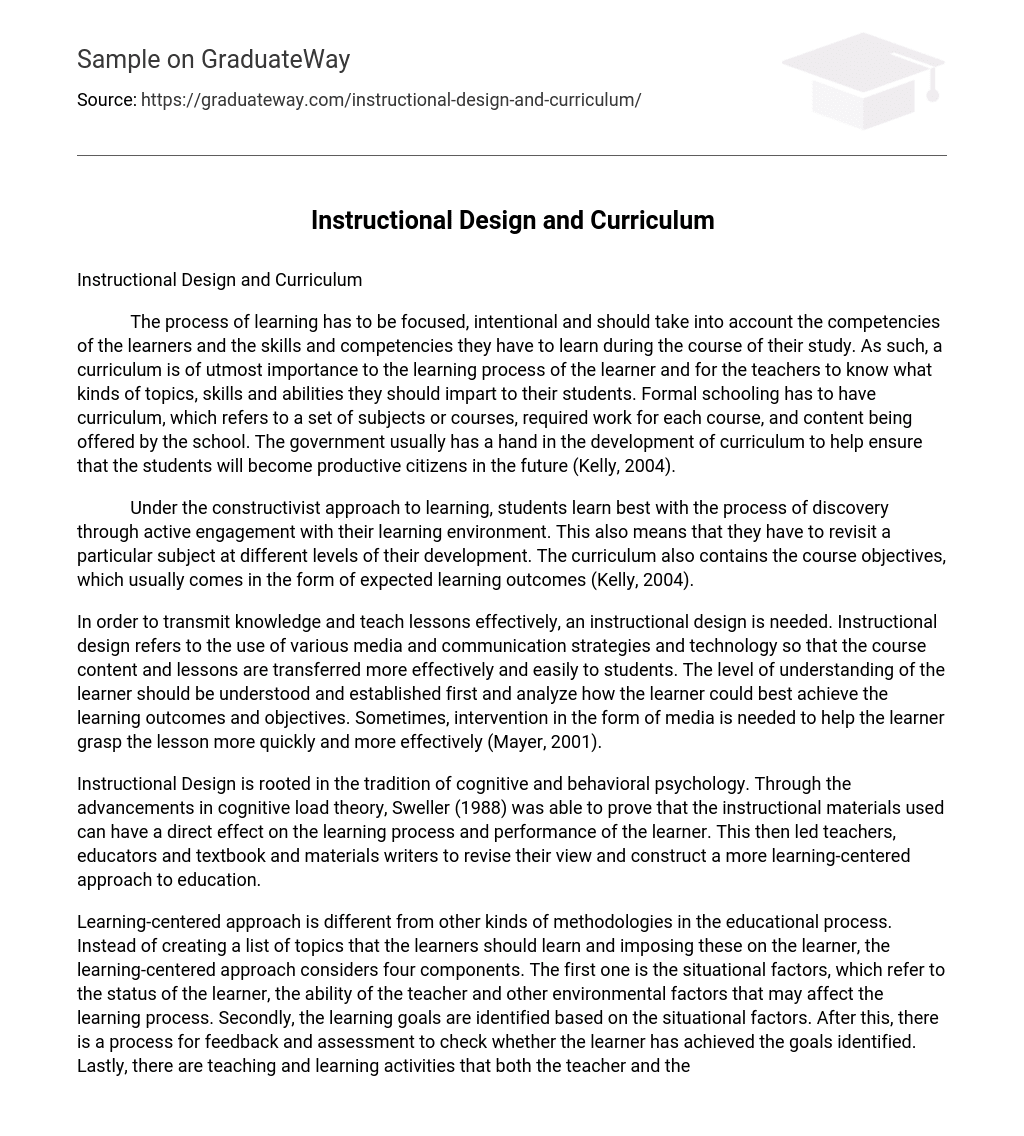The process of learning has to be focused, intentional and should take into account the competencies of the learners and the skills and competencies they have to learn during the course of their study. As such, a curriculum is of utmost importance to the learning process of the learner and for the teachers to know what kinds of topics, skills and abilities they should impart to their students. Formal schooling has to have curriculum, which refers to a set of subjects or courses, required work for each course, and content being offered by the school. The government usually has a hand in the development of curriculum to help ensure that the students will become productive citizens in the future (Kelly, 2004).
Under the constructivist approach to learning, students learn best with the process of discovery through active engagement with their learning environment. This also means that they have to revisit a particular subject at different levels of their development. The curriculum also contains the course objectives, which usually comes in the form of expected learning outcomes (Kelly, 2004).
In order to transmit knowledge and teach lessons effectively, an instructional design is needed. Instructional design refers to the use of various media and communication strategies and technology so that the course content and lessons are transferred more effectively and easily to students. The level of understanding of the learner should be understood and established first and analyze how the learner could best achieve the learning outcomes and objectives. Sometimes, intervention in the form of media is needed to help the learner grasp the lesson more quickly and more effectively (Mayer, 2001).
Instructional Design is rooted in the tradition of cognitive and behavioral psychology. Through the advancements in cognitive load theory, Sweller (1988) was able to prove that the instructional materials used can have a direct effect on the learning process and performance of the learner. This then led teachers, educators and textbook and materials writers to revise their view and construct a more learning-centered approach to education.
Learning-centered approach is different from other kinds of methodologies in the educational process. Instead of creating a list of topics that the learners should learn and imposing these on the learner, the learning-centered approach considers four components. The first one is the situational factors, which refer to the status of the learner, the ability of the teacher and other environmental factors that may affect the learning process. Secondly, the learning goals are identified based on the situational factors. After this, there is a process for feedback and assessment to check whether the learner has achieved the goals identified. Lastly, there are teaching and learning activities that both the teacher and the learner must undergo together (Fink, 2005).
With this approach to education, student learning is promoted and every material and activity should contribute to the learning experience. The four factors of the learning-centered approach work together in enhancing the learning experience of the learner. It also means that the learner picks up relevant learning along the way instead of simply garnering trivial and insignificant lessons (Fink, 2005). The learning-centered approach, then helps modify the instructional design in the learning process without compromising the curriculum prescribed by the school and perhaps by the government. With the learning-centered approach, learners can gain important habits and abilities.
Reference
Fink, L. D. (2005). Integrated Course Design. Idea Paper No. 42. Retrieved 20 June 2008 from http://www.idea.ksu.edu/papers/Idea_Paper_42.pdf.
Kelly, A.V. (2004) The Curriculum: theory and practice. London: Sage Publications.
Mayer, R.E. (2001). Multimedia Learning. Cambridge: Cambridge University Press.
Sweller, J. (1988). “Cognitive load during problem solving: Effects on learning”. Cognitive Science 12 (1), 257–285.





